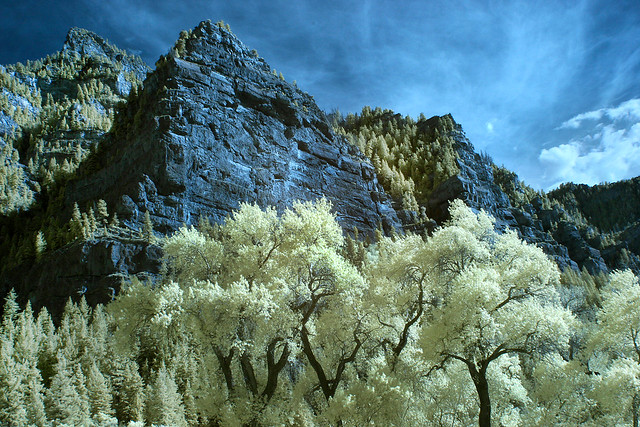I've been very remiss in not reporting recent OSM Nottingham pub meetings.
Part of the idea of this blog was to give people a feel for what goes on at such meetings and who comes along, so this is definitely a failure on my part. (I should add that in the absence of
simple social aspects directly implemented on the main OSM site, keeping the basic communications to keep people informed of these meetings is harder work than it should be, and when I'm busy with other things I tend to miss channels out or send reminders out too close to the event).
 |
OSMers in Exeter Arms
(will_p, wja, Karen & MatSmith, blackadder and ChrisClemson)
Image courtesy of wja rights reserved |
For some time, in fact before we went to Worksop to link up with the HOT Hack team, we've talked about changing the venue from time-to-time in the hope of making it easier for mappers elsewhere in the East Midlands to join us. Derby always seemed an obvious choice both because we know a number of mappers who live and work in Derby and because it's pretty accessible (I can reach the centre of Derby in 20 minutes by bus, only marginally shorter than the time to get to Nottingham City Centre, and 10 times further).
 |
Mix of local OSM folk and HOT hackers at Worksop, Sept 2013.
(Wonderchook, harrywood, IknowJoseph, bigfatfrog, FranBoon and others) |
|
Consulting with the pub experts in the OSM Nottingham crowd gave two suggestions for a place close to the centre of Derby and handy both for buses and trains: the
Brewery Tap and the
Exeter Arms. I plumped for the Exeter Arms as from the descriptions by William and Andy it sounded a very attractive pub. The only downside of Derby is that two of the city's busiest mappers (
Paul The Archivist and
Rovastar) work in London these days.
When this meeting was announced on the
talk-gb list Dudley Ibbet intimated he'd come along. I missed most of Dudley's
talk at SotM in Birmingham, but did have a chance to chat to him later. Like Andy (
SomeoneElse), Dudley is a stalwart mapper of footpaths. As I have rejuvenated my own interest in
mapping footpaths, it seemed likely that footpaths would figure in our pub conversation.
Coincidentally, I'd done a bit of mapping about 10 days before on one of those wet and windy days which have been so common in Britain this winter. I'd hoped to meet up with some Botanist friends, but I think they'd not been brave enough to venture out. I had a short walk at Charnwood Lodge National Nature Reserve along a footpath and in some access land. An hour was about as long as I wanted to stay out: I found some nice lichens and a few plant galls:
 |
Obligatory photo of something biological to accompany blog post on footpaths :-)
Podetia of a Cladonia lichen. |
|
I chose a route back which wandered along country roads (the M1 had been pretty windy anyway) with the aim of noting as many footpath signs as I could. I started passing through the industrial town of Shepshed and managed to add a large number of pubs which distressingly were missing from OSM. When I came to update OSM with the information I'd collected I realised lots of the paths were on the map and had been mapped by a single user
MatSmith, they just had not used the designation tag to provide the information which I'd been using to find missing footpaths. A little later in the week I noted a footpath somewhere else also mapped by Mat. For some reason I'd never noticed his contributions before: now I realised we had another major footpath mapper relatively close by. I took the obvious action and sent him a message about our meeting in Derby.
For the day I updated my comparison of PRoW data from rowmaps and OSM for
Notts,
Derbys and Leics. with the addition of a background layer from
OS OpenData Meridian to make it a bit easier to locate things (I had this data readily available in PostGIS, so easier to do than titivate OSM data). Naturally footpaths did get talked about, but the realisation that my comparison was seriously inadequate for much of Leicestershire because of MatSmith's mapping, means I'm not publishing the latter map. I have however been working on some way in which we can highlight missing footpath data as a background layer for OSM editors without encouraging tracing from sources fraught with copyright problems.
 |
Each orange dot shows where a PRoW meets an OSM highway which is not a track or path
(area is NE Leicestershire). PRoWs are shown with OS OpenData Meridian 2 layer for context.
Contains Ordnance Survey Open Data Crown copyright and database right 2012. |
A couple of other topics came up:
- Chris Clemson was asking about rendering tiles and running a web server. I've done this on a small scale on a local system with oldish infrastructure so was able to tell him about that side of things, but I've never tried with renderd which manages rendering according to user requests rather than blindly generating the whole tile set. TileMill of course provides a fairly easy to use way of generating a tile set, but I haven't tried to build my own viewer. I may have to get to grips with this for building FHRS tiles.
- Andy (blackadder) talked about the possibility of having an OpenStreetMap Midlands gathering. This would probably be a day-time event in the Summer. Places like Stoke-on-Trent and Cannock Chase came up in discussions. Both are reasonably equally accessible from Birmingham and Nottingham/Derby (what Jones the Planner calls Brian Clough City) and are not so well mapped. Personally I'd be interested to visit Cannock Chase.
All-in-all a very profitable meet-up.
Upside. We had a really good turn out
. It was great of Mat(t) and Karen to join us at short notice and also very nice that Blackadder came up from the
MappaMercia crowd.
So out of the 9 of us, 5 were joining us for the first time. Definitely coming back to Derby (in May).
The downside. The Exeter Arms is a great pub with lots of neat little rooms and what looks like good food (albeit a bit fancy: pubs which serve coffee with shortbread biscuits shaped like bones dipped in chocolate are hardly ordinary boozers):
unfortunately this meant it was very busy and the kitchen was maxed out! We probably need a slightly quieter venue!









